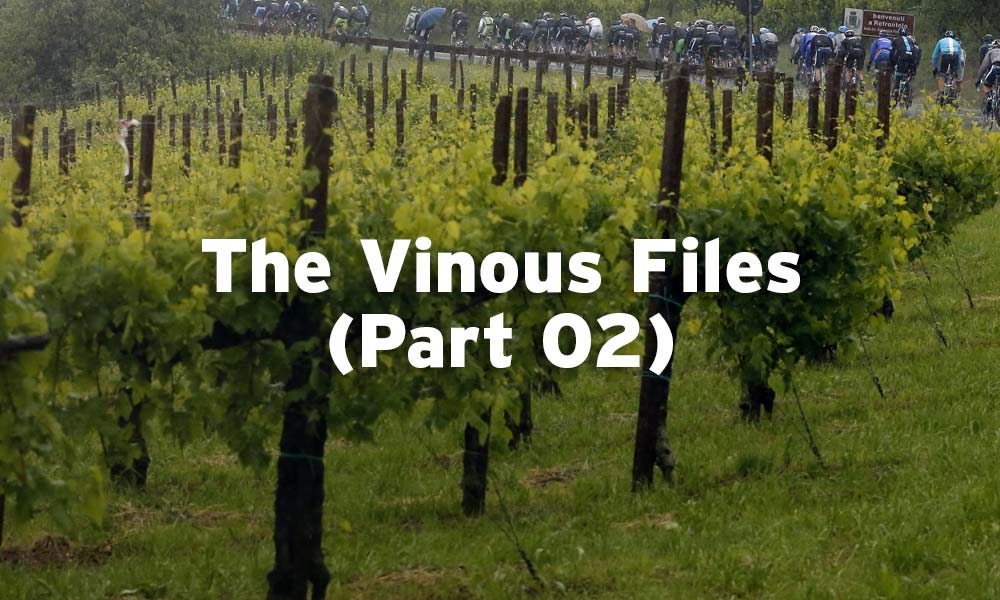[et_pb_section bb_built=”1″ admin_label=”section”][et_pb_row admin_label=”row”][et_pb_column type=”1_4″][et_pb_text use_border_color=”off” border_color=”#ffffff” border_style=”solid” _builder_version=”3.9″]
Drew Tuckwell is a winemaker and passionate cyclist who is on holiday in France this July. He has been inspired by riding – and the regions he’s visiting – and is writing The Vinous Files for RIDE Media.
Part 01: The Vinous Files
[/et_pb_text][/et_pb_column][et_pb_column type=”3_4″][et_pb_text use_border_color=”off” border_color=”#ffffff” border_style=”solid” _builder_version=”3.9″]
– By Drew Tuckwell
As the Tour de France peloton makes the 700km transfer from Roubaix to Annecy on Monday, the Tour parachutes wine lovers from the wine wasteland of northern France into a very peculiar wine region in the eastern Alps of France’s Savoie region. Wedged between Lake Geneva to the north, Lake Annecy to the south-west and the Swiss border to the east, these are wines that are defined by their alpine environment.
If you can find any in Australia, let me know, I would love to try them. Needless to say they are relatively rare except in the local region and almost impossible to find outside of France.
A large proportion of the wines produced are white, something like three-quarters of the wines from this region.
The pre-dominant white varieties are Jacquere,Roussanne and Altesse, also known as Roussette.
So, whilst watching the Tour, there are options as there are a few producers of Roussanne in Australia from a number of different regions and it is a variety well worth seeking out.
There are red wines produced, mainly from the Monduese grape variety. The only producer of this variety in Australia that I can think of is Brown Brothers of Milawa and their Monduese is usually blended with other varieties.
On stage 12, as the peloton tackles the Queen Stage to Alpe d’Huez, the Tour travels through another alpine region of Isère. Now, if wines from Savoie are going to be difficult to get your hands on, then wine from Isère are not going to be in your local bottle shop.
Any vineyards on screen during the Tour de France coverage are likely to be planted to Chardonnay, Chasselas, Marsanne, Rousanneand Viognier and Gamay, Pinot Noir and Cabernet Franc for rosés and reds.
By stage 13, the peloton is done with the Alps and they start their transitional stages across the south of France toward the Pyrenees.
The stage from Bourg d’Oisans to Valence delivers the peloton in the heart of the Rhone Valley, land of voluptuous red wines and rich white wines.
Immediately to the north of Valence are the hedonistic wines of Hermitage, Crozes-Hermitage and Cornas.
Red wines are made from the Syrah variety or what we Aussies call Shiraz. White wines from Marsanne and Roussanne. These are personal favourites of mine and I will certainly be pulling a cork or two during this stage (no screw caps here). They are widely available in Australia, so check them out.
Stage 14 starts a little further south and this is where Côtes du Rhone comes into play, vast vineyard areas of Syrah, Mouverdre and Grenache that can make delicious, medium-weight, fresh and crunchy red wines. However, the peloton may go a bit thirst by the end of the stage as Mende, located in the Lot Valley, is not renown for any wine production of note.
Stage 15 from Millau to Carcassonne spends a large part of the day in the wilds of the Parc Naturel Régional du Haut Languedoc. But when they pop out on the southern side they are smack bang in the heart of the Minervois wine region. Southern France is often disparaged as a cheap bulk wine producing region of France but the Minervois is a hidden gem that I have recently rediscovered and I am loving some of these wines – absolutely delicious.
Santé!
– By Drew Tuckwell, Wine Peloton
[/et_pb_text][/et_pb_column][/et_pb_row][/et_pb_section]



